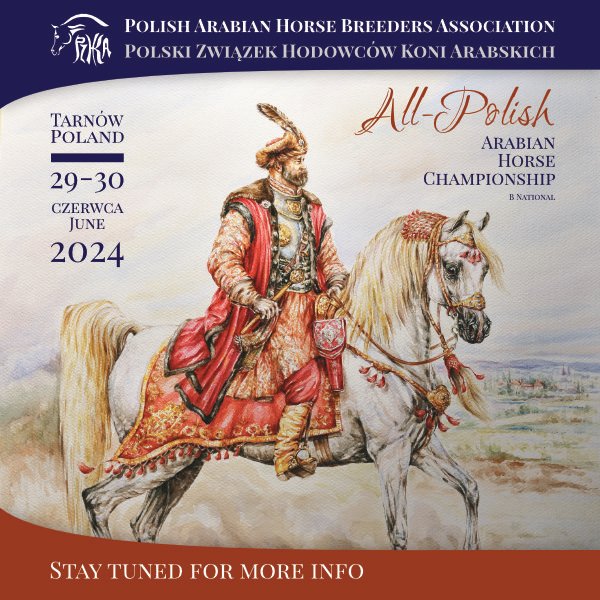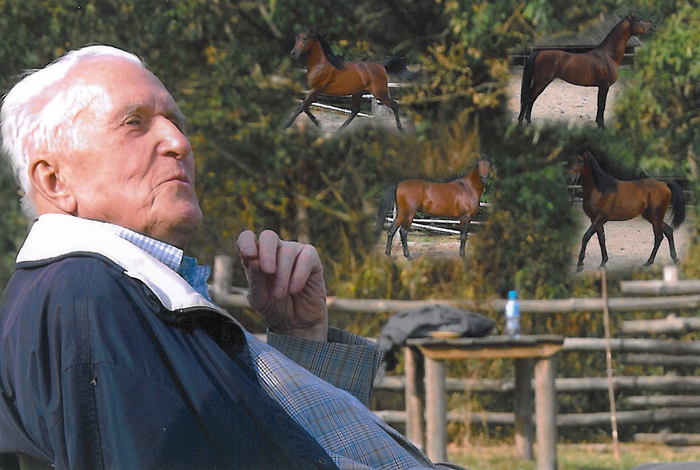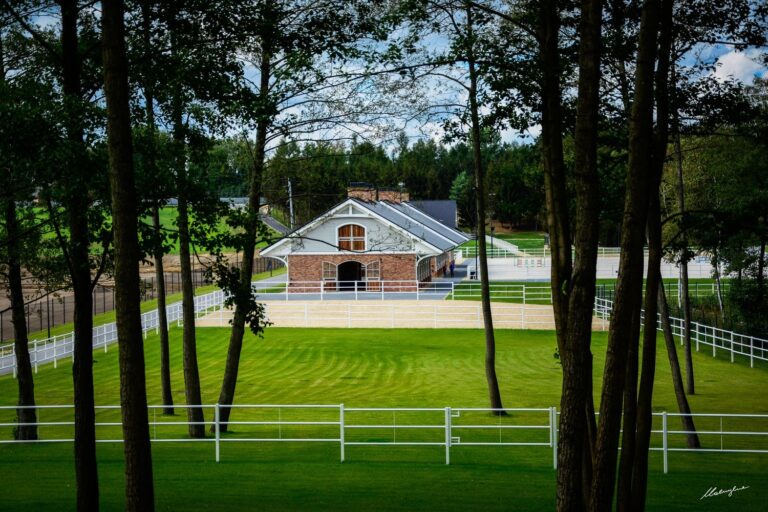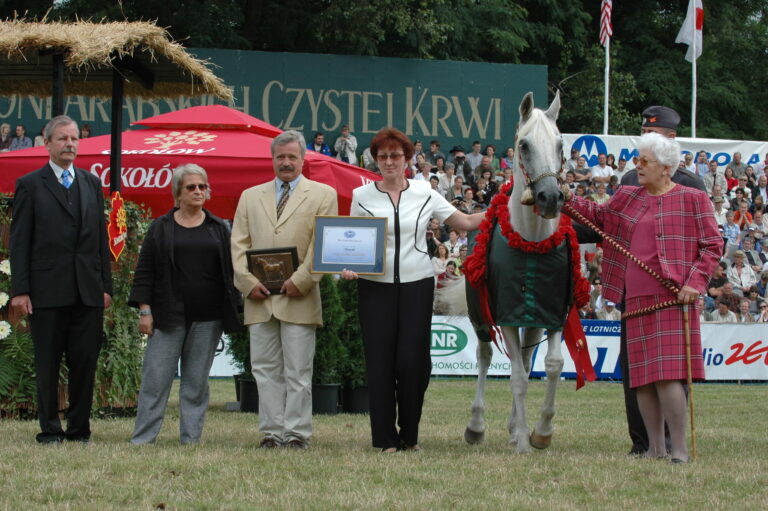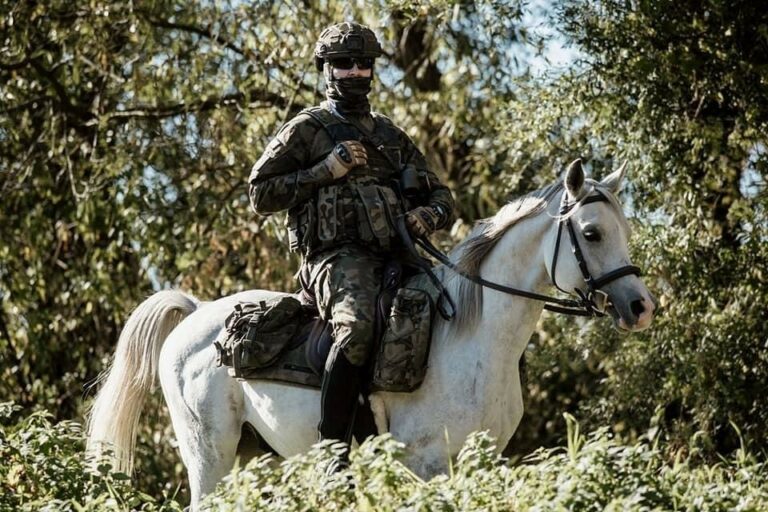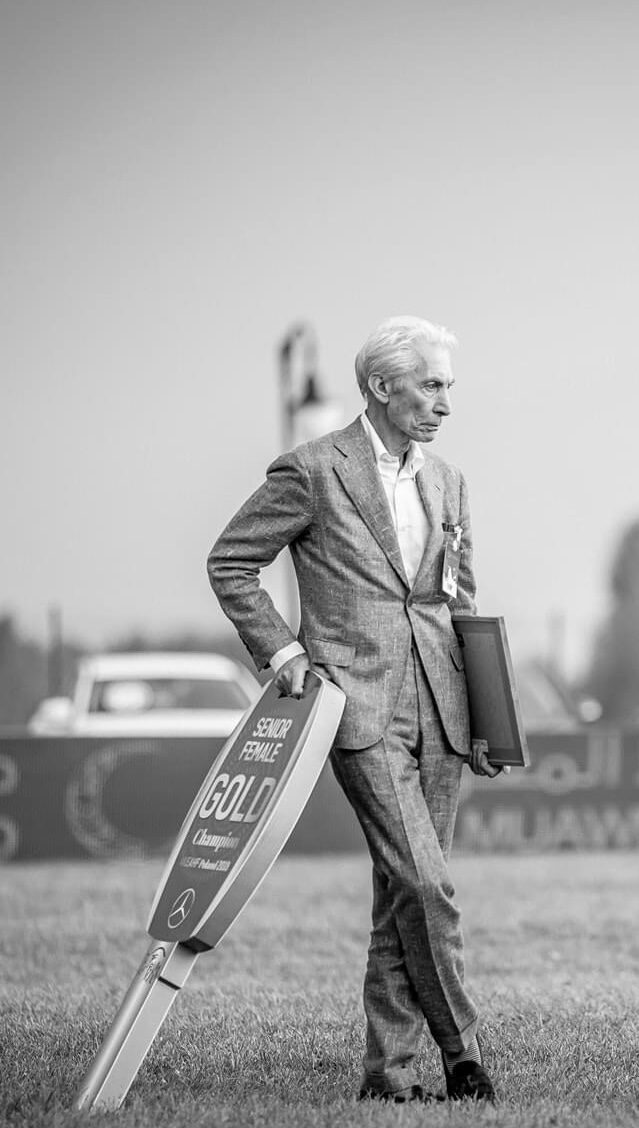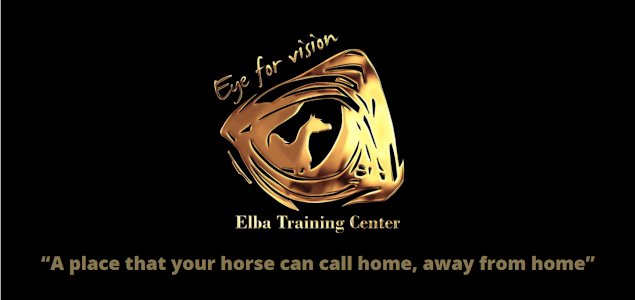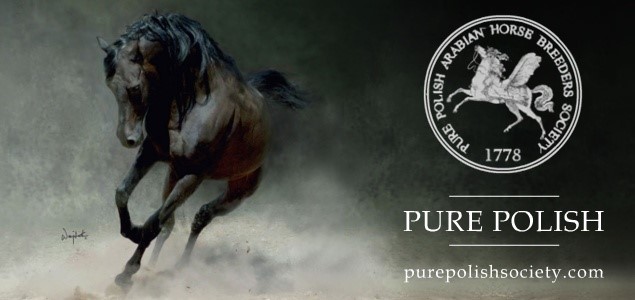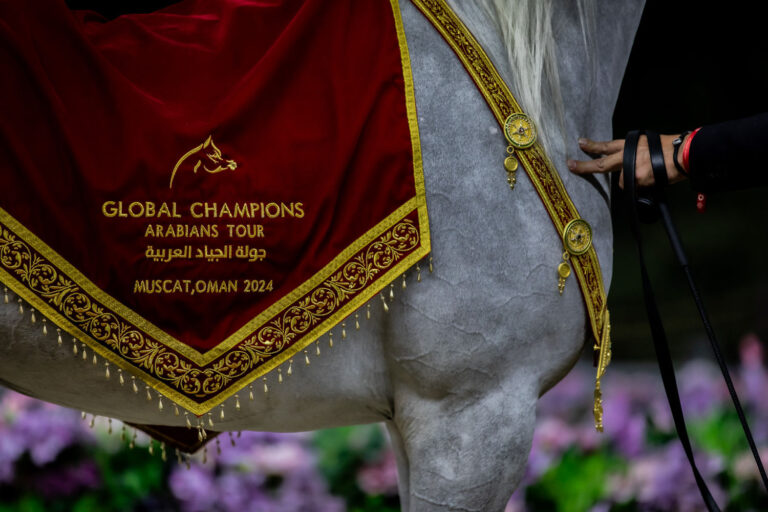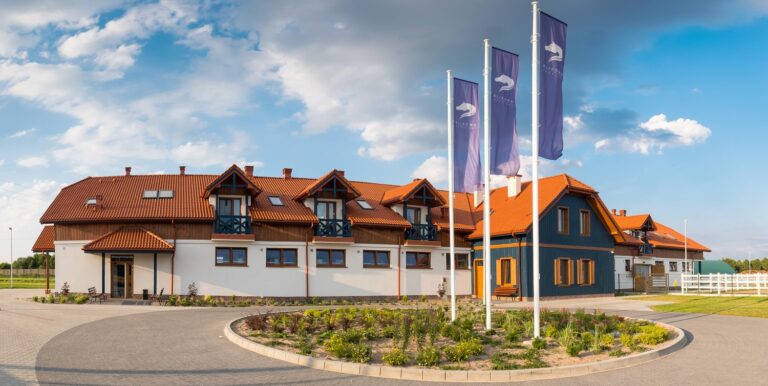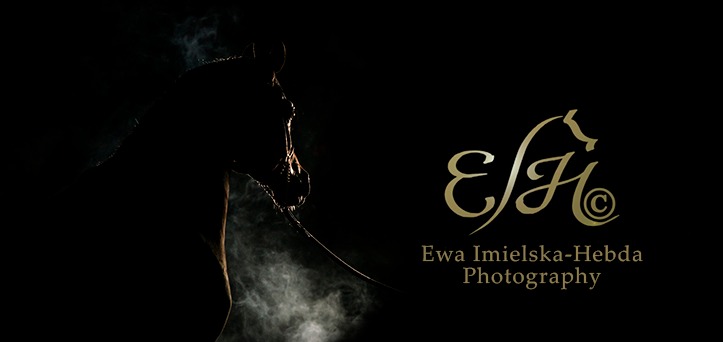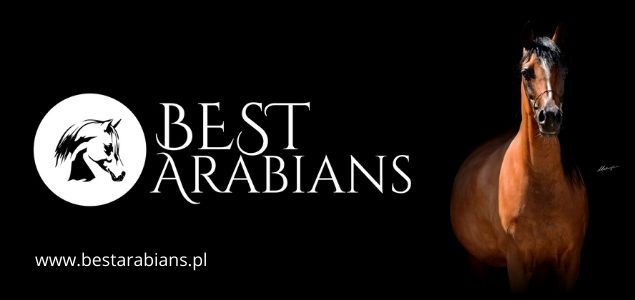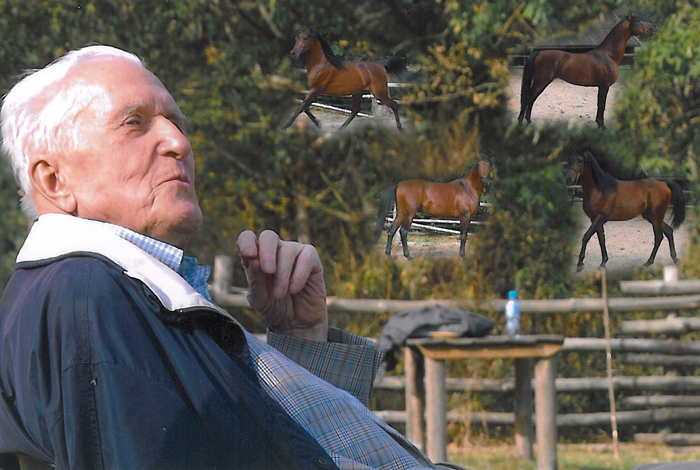
ROMAN PANKIEWICZ – a breeder at Albigowa Stud in the 50s, where the epochal stallion Bask (Witraż – Bałałajka/Amurath Sahib) was born. In the 60s he was employed at Michałów Stud. Author of numerous articles on the history and breeding of Arabian horses, published in Poland and abroad. His works also include books dedicated to Arabians, “Polish Arabian horse breeding 1918-1939” and “Register of Polish Arabian purebred stallions” (two volumes: 1944-1983 and 1983-1993) among others.
Monika Luft: You often joke that it is not you who bred Bask, but God himself. Is that modesty or coyness?
Roman Pankiewicz: One of my friends once said to me: your modesty is false… To this day I regret that I didn’t reply: your stupidity is boundless!
M.L.: But you are the breeder of Bask.
R.P.: No. Should such a feat be possible to be achieved by people, then there would be ten such Basks walking around. And where do you have a second one?
M.L.: So it was pure coincidence?
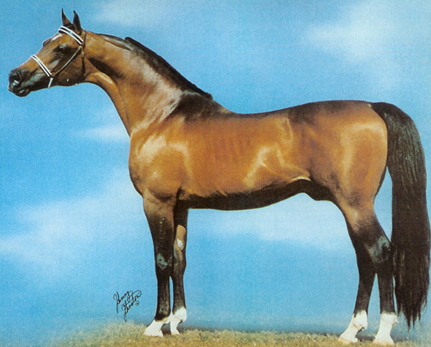
R.P.: Yes. But of course this coincidence required some help from us. First of all Bask was the son of a wonderful mare and a wonderful stallion. But Bałałajka produced numerous offspring with Witraż and each of them was of a different type. For instance Bandola and Arfa. Two completely different types! Bandola foaled many good stallions, Arfa – numerous good mares. And there was also Bakalarka, marvelous, very delicate, a lovely filly… Sadly, I already had two of Bałałajka’s daughters and Bałałajka herself at the time. So Bakalarka had to go. Until this day I can’t get her out of my head.
M.L.: She was sold?
R.P.: She went to some state-owned agriculture farm. There was no place for her here. Our duty was to prolong all the damlines. Because if we lost a sire or damline, we would’ve been like a painter who lost a color, with his paintings becoming coloristically poorer. The number of mares was enlarged anyway… Several Albigowa-bred mares were taken by Director Ignacy Jaworowski to Michałów. Perhaps Bakalarka or her sister Barcza were “dismissed” because when they were leaving the racetrack nobody saw them. I wasn’t there at the time. Because if anyone saw them, they’d take them home. Barcza was large, robust, she would fit very well into the Michałów breeding program. And Bakalarka was a dream…
M.L.: How was it possible that such mares were not tried out in breeding? We’re all aware that there was a certain number of “job posts” in the herds, but why was there a shortage of these for superb mares?
R.P.: The selection was done by inspectors who were breeders employed in the Federation of Breedings of Pedigree Animals. We didn’t have much to say. And these inspectors were of various sorts. With some, those of the pre-war kind with huge knowledge like Juliusz Kłoczowski or Marek Piotrowski, we talked. While others just came, eliminated horses from stud and went back. If I had a chance to speak with such an inspector, I would beg him down on my knees to leave Bakalarka. The inspectors treated us as though we had no knowledge on breeding and did not even bother to discuss their decisions with us. A great pity, because maybe it would’ve been possible to save more [animals] for breeding. This was one of the reasons why I left Albigowa. Jaworowski, who was a director at Michałów, left those “eliminated” horses at the stud regardless. A year later they were incorporated back into the stud and he was highly praised. Unfortunately, horses eliminated from the Albigowa stud were purchased by peasants from the Miechów County and these were ultimately lost for our breeding.
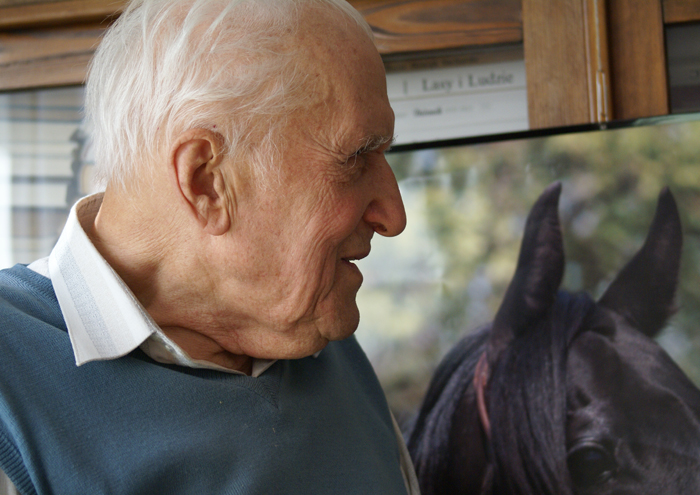
M.L.: Was it you who gave Bask his name?
R.P.: Yes. I always tried to give horses short, nice names, easy to translate – because their export had already begun in those times. And Bask [in Polish] is a courageous inhabitant of the Basque Country in Spain. One of my friends who traveled a lot told me that the Basques are hard-working people. And so the horse became Bask. That name suited him like no other.
M.L.: You wrote that should Dr. La Croix arrive one day later, he wouldn’t have found Bask as a stallion. Why was he considered unsuitable for breeding? Who decided about his elimination? When you read about his wonderful type and beauty it’s hard to believe that they went unnoticed in Poland, among experts.
R.P.: In those times many horses returned from the track and they were gelded on a large scale. It’s hard to say that Director Andrzej Krzyształowicz didn’t appreciate him… It was just that horses came from the track and he said: geld them. LaCroix was also not aware at first what Bask represented in terms of quality and value. He purchased many horses at the time and got frightened that he had too many. He wanted to sell some, among them Bask, to a certain Swedish breeder. He paid 3,000 dollars for Bask, so the horse would not be expensive. Nevertheless the Swede did not take the offer. Bask, who had a very nice head and neck, began to be shown. And the Americans fell in love with him! He won everything, even in driving classes. His breeding fee amounted to 10,000 dollars.
M.L.: Why was it this horse, and not some other, that hit the mark and used his time to the fullest?

R.P.: And how did you find your handsome man? LaCroix exhibited not only Bask, but a whole group of other Polish horses as well. But only Bask was so successful. Because others did not sire such progeny as he did. When Bask’s progeny began winning at shows, LaCroix purchased a large area of land, built a farm in Kentucky and sold plots to Arabian horse breeders. A lot of farms were established close by. A car drove all around these farms, collecting mares to be bred. Bask covered them and they were driven home in the evening. While we’re about it, Kentucky has great grass – I even wanted to sow it here and asked for seeds while we were with Jaworowski in the States. And they gave us two packets – one for me and one for him. But then Jaworowski said “Why would you don’t need it”, so I gave mine to him and the chickens must’ve eaten that grass, because I never heard him having sown it… But there must be something in it. When I was in Russia, Siberia, I had horses under my care over an area of 20 thousand hectares. And they had a large field with wonderful grass – when you bit into it, it was sweet. The horses ate that grass with great pleasure. It had no weeds, though the locals said that no one sowed it, it grew there by itself. I tried to choose places to graze in such a way to have the horses best fed. And later, even when they received unripe oats – times were hard, sometimes we were grateful even for those – they never got ill.
M.L.: How did you find yourself in Siberia?
R.P.: My father came from a kulak farm [kulaks were a category of wealthier peasants in Soviet Russia], which lay 16 km from Grodno in the Augustów District. My uncle graduated from veterinary school in Vienna before the war. My father was a very good farmer and married a dowered miller’s daughter. He sold part of the land to pay off his debts. Later he made money on leases and purchased Kapłanowce. When the Russians came he had to flee. He took refuge in Suwałki, while me and my mother went to our uncle’s, who had a mill. The first exile-transport to Russia was in February, the second in April of 1940. My mom was able to flee, through the back doors, barefoot, while my uncle treated the Russians to a vodka… We wanted to get through to the German side. But we were scooped up from the train and deported to Siberia. There we spent 6 years; first I worked in the taiga at clearing the forest, though I was just 16 years old. Later my mom managed to get me a job transporting timber. When Władysław Sikorski [Polish general and politician] signed a treaty with Stalin we were allowed to travel across the entire territory of Russia, but we were scared and remained in that region. We headed off to a sovkhoz [a state-owned agricultural farm in Soviet Russia], which was later turned into a konzawod – a stud. There I did literally everything, I drove a tractor, a combine (harvester), I worked in a mine and in a barn. But the hardest task for me was to load half a ton of hay or straw on very small Russian sleighs. I later learned that I should have used two sleighs. After a while I drove them by myself. Later still I became the head groom.
M.L.: When did Arabian horses appear in your life?
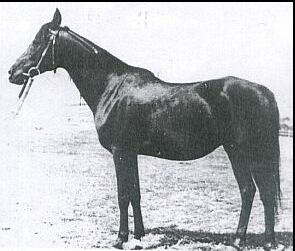
R.P.: Everything began when I purchased, sometime in 1947 or 1948, [the weekly publication] “Przekrój” with an article by Józef Tyszkowski on Nowy Dwór. And that’s when I began dreaming of Arabians. Also listed was a register of mares and there I noticed the black Arabian mare Ferha (Kuhailan Abu Urkub – Udżda/Kuhailan Kruszan, bred at Gumniska). And I love black horses. Black horses drove me to be baptized… I believe in coincidences. Thanks to a coincidence I got a place at Albigowa and later at Michałów. I came to Albigowa in 1951. That was the first time that I saw Arabians in live form.
M.L.: Where did the photograph of Amurath Sahib from 1949 above your bed come from?
R.P.: I was a trainee at Posadowo. The head groom was Witalis Bielecki, who worked at Janów during the war. He once fell ill and I went to visit him. And he emptied out a box with horse photographs, many photographs – and I fell in love with that one photo. He gave me that picture and I enlarged it and hung it over my bed. I later gave it to the archives of the Polish Arabian Horse Breeders Society. Actually that photograph turned out to be unusually favorable for the stallion, as Amurath Sahib was not that beautiful in real life as in that picture.
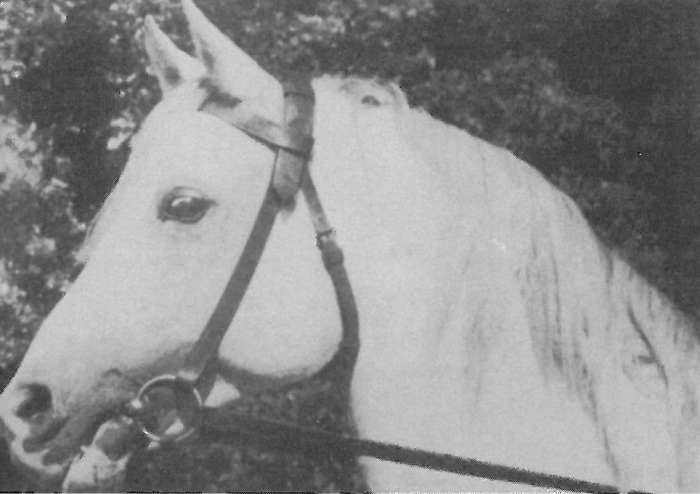
M.L.: How did your beginnings at Albigowa look like?
R.P.: We traveled with the horses to the Służewiec track, but as the Albigowa horses were not good racers, no one wanted to take them in. But the manager of the racing stables at that time was Bolesław Orłoś, the administrator of Albigowa from before the war, so through some backing and favoritism he squeezed one horse per stable and we somehow ended up stuffing them all somewhere. We returned home, I gathered the grooms and said “If someone is talented, he learns new things easily. If someone is not talented, but applies himself to study diligently, he will also end up knowing things. Our horses do not have a racing factor in them genetically, but we must develop this in them through movement. And after four years we had won everything there was to win at the track… Sabellina was the only one we couldn’t beat – she was a wonderful mare. But besides that I think we won almost everything over six years. That’s how important the rearing of youngsters is. Maciej Świdziński wrote about the rearing of foals, and so did I. I waited that some of my other colleagues would write about how they rear their foals, but that did not happen. Because usually foals were reared by grooms or sub-grooms at separate farms: in Michałów Stud at Podlesie, in Janów Stud at Pożary, in Posadowo Stud at the distant Mokre Ogrody estate and in Racot Stud at Darłowo. If I was to be a breeder again, in another life, I would want to keep the stallions close by and rear them myself. Once the director of our Federation, Stanisław Kurowski, said at a meeting “If a horse breeder still has time for something other than horse breeding, it means he’s a bad breeder”. Whereas we had many duties. At Gogolewo there were barns, sheepfolds and in the end I didn’t have much time for the horses. At Albigowa I designated a young boy, Kazio Sitek, to be the head groom. Everyone always said that people need to have orders given to them. And I said “Kazio, before you do something, think first whether you can do it in a better way”. And he was a great groom.
M.L.: You used to ride Witraż at Albigowa. But apparently he wasn’t an ideal mount…
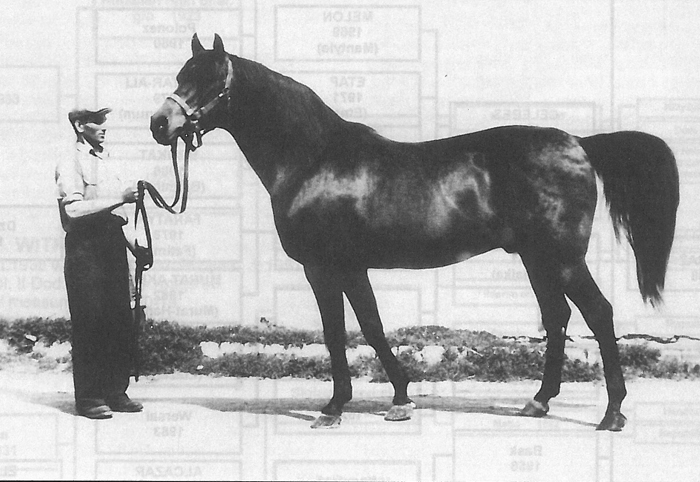
R.P.: He had, as we know, a hard wartime childhood and was a bit oversensitive. For instance when he saw a cigarette box laying by the side of the road, he jumped sideways. There is this rule that when you suspect a horse will shy away from something, you tighten the rein and leg aids. But when I saw a box, I let the reins loose and pulled the legs from the horse’s sides. He went dumb and didn’t know what to do! I almost died laughing as he walked very carefully and just stared at that box… And there was nothing that he could be scared of. There were various hardships with Witraż, his progeny was also difficult in that sense. We had one worker, from the communist secret police – every work place had to have one. I was once going on a business trip and wanted to give Witraż his daily ride, in the morning. I went to his stall and that groom was saddling him. The horse was tied up on a strong headcollar, but nevertheless managed to rear up and fall, with the headcollar breaking into pieces… The “secret police” guy stood right next to him. If anything would have happened to him, I would be locked up for it. An Arabian is a sensitive horse and easy to be broken down. He is delicate and sensitive to everything. A draught horse has a different nature, it is not easy to throw him off balance.
M.L.: You worked in eight different places – where?
R.P.: When I matriculated, I wanted to work with horses – but as I was a trainee, the money that was offered wasn’t enough to support me and my mom. I became an instructor at the Agricultural Secondary School in Poznań and Szamotuły, which I graduated from. During a sport event in Poznań I met Jaworowski, who was at the time an assistant at Racot Stud. And he was the one who took me with him to Racot. When he left that stud, I was working as a horse breeding inspector at the regional office in Poznań. But all the time I was itching to return to a stud… There was no vacant post at Albigowa at the time, however after a while it became available. I worked there up to 1958. Later I transferred myself to Gogolewo. In 1959 I went to Michałów for an inspection. It turned out that a spot there had just become vacant and I stayed there as an assistant. But I had a terrible, damp flat and one of my daughters was ill all the time. The doctors stated that it was an allergy to horse hair. So we moved from Michałów and settled near Częstochowa, which in turn had a cement plant. And that’s when my daughter really began to be ill! So then we knew it had nothing to do with horses. I went to the Bogusławice Stallion Depot and stayed there 16 years, up to retirement. And during retirement I began to write.

M.L.: And you wrote seven books.
R.P.: Seven and a half. I would still like to finish a book on Albigowa mares. I hope I will have the time.
M.L.: What was the best time for Polish breeding – the modern times or one of the periods gone by?
R.P.: I think that Polish breeding did a lot of good for the image of Poland abroad. Important people from America started traveling to our country, though they previously thought that polar bears walk our streets. And our horses headed to all corners of the globe! I don’t know whether we will live to see such an era in Poland again. Today breeding requires a large capital; we don’t have such a large one.
M.L.: How do you assess today’s condition of breeding in Poland?
R.P.: Our breeding is very stabilized, genetically strong. Though it is difficult to shift it into something modern, still our mares give good progeny and for that reason are very valuable. They make a good foundation.
M.L.: How would you sum up 20 years of Polish private breeding?
R.P.: That’s the same amount of time as between 1919 and 1939. But in the inter-war period horses were bred by people who had breeding traditions, whereas today they are bred mostly by people who have money and that’s a great difference. Private breeding is like a soap bubble; it has happened before, for instance in the US, that a divorce was all it took to destroy an entire breeding.
M.L.: So according to you are these last 20 years a successful or a wasted period?
R.P.: Neither. Private breeding in modern Poland began with horses purchased from State Studs which were eliminated or cheap, not the best material. It is often run by people who do not have a lot of knowledge on Arabian horses. This results in mediocre quality, though with some exceptions. But that doesn’t mean that small breedings cannot break through on the scene. We remember Kraśnica Stud. They had two mares. One gave nothing, but the other!… But then the breeding community in the inter-war period was different, more assimilated. People helped one another. That’s what Adam Sosnowski told me about those times.
M.L.: How do you see the future of Polish breeding? A thousand Arabian mares – is that good or bad?
R.P.: In my opinion – bad. Some of them are in the wrong hands. In 1939 there were 22 breeders who had one mare each, 12 had two, 8 had three, 4 had four, 1 had five, 2 had seven, 2 had eight and 1 had nine. And of course Janów had twenty something. In total 164 mares in the hands of about 60 breeders. They traveled to Babolna to purchase horses, to Yugoslavia, England and even Arabia. But breeding is determined by the market. If there is no market, there is no breeding. Will there be a market for the progeny of one thousand mares? I doubt it.
M.L.: Your greatest satisfaction as a breeder? Bask?
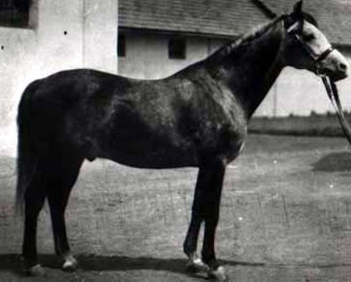
R.P.: No, not Bask, because he wasn’t of my breeding. But I had other successes. There was an exceptional inspector, Juliusz Kłoczowski. He came to Albigowa to create a breeding plan for the given year. I begged him into breeding that black Ferha to Trypolis. They didn’t really suit each other, but somehow I had a feeling that it might be a good move. The result was the stallion Faher, who prolonged the famous sireline of Krzyżyk. Furthermore, Gastronomia (Marabut – Ofirka/Ofir). She was eliminated several times and I rescued her each time. She showed her gratitude by producing wonderful horses! Or Elza (Rasim Pierwszy – El Zabibe/Rasim III), an inconspicuous mare, but I liked her very much. Sadly, she died tragically. But her daughters were Celina, Ellora and Elżunia. Celina became champion in England, Ellora gave many valuable progeny, Elżunia was quickly sold abroad. In this case you just have to feel something. Just like with women. I attended secondary school in Poznań, my wife – in Rokietnica. We met at a dance. I looked into her eyes, fell in love… I don’t know why. And we lived together for 55 years.
M.L.: The greatest breeding disappointment?
R.P.: I fought to have Nabor purchased. The sireline of Skowronek, an obvious one. When I saw him I was enchanted – a wonderful white head and beautiful black eyes, nostrils… And they gave him to me, since I exerted so much effort. I began to observe him. When he came to us, it was already past the breeding season and all the mares were covered. After a year of observation I acknowledged that he doesn’t suit Witraż daughters. When Jaworowski came I told him “Take this stallion, because he will be good for Amurath Sahib daughters”. And he went and gave splendid progeny with them. That was the beginning of the “E” line. Whereas he did not leave a mark at my stud, though I dreamed him up. At Albigowa he gave the best progeny with a granddaughter of Amurath Sahib, but this colt was born after Nabor’s departure to Michałów.
M.L.: The most difficult decision?
R.P.: The departure from Albigowa, from my beloved horses, which excelled both on the track and in breeding. To let go of that and leave, it wasn’t easy. But when I was just beginning, being just a trainee, I had more opportunities to make decisions than later when I became the assistant director. It turned out that I had nothing to say then. They eliminated what I wanted to keep. There were subsidies for mares, so foals were eliminated to improve the financial situation of the stud. However I had high hopes for those foals. And they were eliminated… I fixed myself a transfer to Gogolewo. I returned to Arabian horses when I heard about an opening at Michałów. Here all the concepts belonged to Jaworowski, I was ready for that and so it wasn’t frustrating.
M.L.: The horse of your life was?…
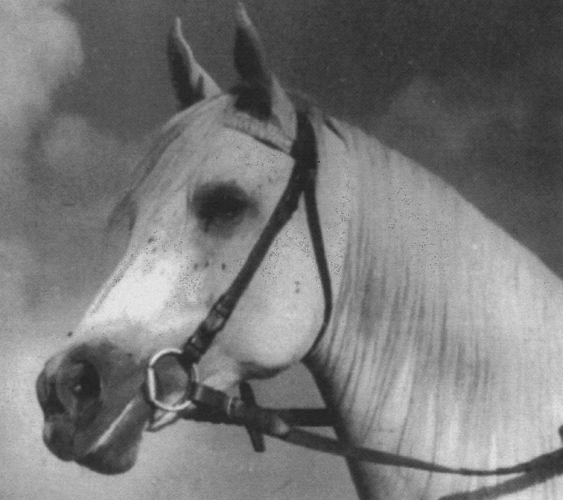
R.P.: Bałałajka. I loved that mare. She had this something about her… She was so cuddly, you could hug her, pat her. She never harmed anyone.
M.L.: Is breeding a job, a passion or an ordeal? Or perhaps a calling?
R.P.: You’ll probably laugh – my answer is that it’s an ordeal. Because when doing anything else I can more or less predict the effect. And here I have no certainty. Bałałajka gave nine progeny with Witraż and each was different! If I was to be born again, I would never take up horse breeding. Alongside horses we also bred cattle. And that’s what exhilarated us! You took a good bull, you fed the cows properly and you had a good result. Whereas in the case of horses you bred them and bred them to no effect, though you had the best intentions and gained skill over the years. When a craftsman does something, he becomes better at it over time. If he takes the time to learn, he will become a journeyman, later maybe even a master craftsman. But an artist has to be created by God. You can’t acquire that. To me Maciej Świdziński, who bred Thoroughbreds at Golejewko Stud, was such an artist. The Italian breeder Federico Tesio was such an artist. When he died, the horses remained but the successes ended, as there was a lack of his expertise.
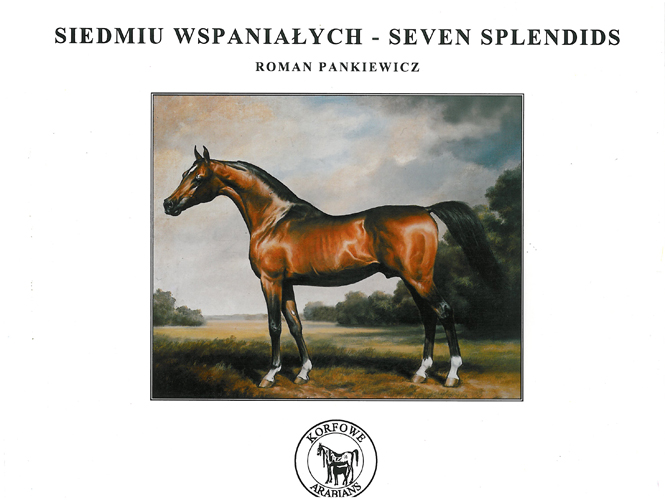
M.L.: In the foreword of „Seven Splendids” you wrote „I am thankful to fate that I had the chance to meet so many wonderful stallions in my life. I don’t know if I met that many wonderful people.” That sounds a bit bitter…
R.P.: When it comes to people about who I can say were breeders and with whom I had a common language, they were: Juliusz Kłoczowski, inspector; Marek Piotrowski, the head of the Horse Breeding Department; equine expert Adam Sosnowski, a horse breeding inspector at Sopot for 25 years; Director Andrzej Krzyształowicz; Director Ignacy Jaworowski. But breeding is an original, own vision of each breeder. Tyszkowski used Comet, but at Janów Comet bred only 5 mares and went to Michałów at once, as Krzyształowicz didn’t like him. As we know, Krzyształowicz didn’t use Monogramm either. He didn’t even want to watch a video of that horse, leaving the room. Jaworowski in turn did not use Czort even once. I think that if we cross like with like, we will get something similar. If we cross two different things, there is a chance that we’ll get something interesting. Witraż is the best example. His sire – a 100% Kuhailan, his dam – a Saklavi, Makata by Fetysz. And the result was a horse which was not only beautiful, but sired good progeny. So breeding is unpredictable. No one should think that they have a recipe for breeding. Nothing like that exists!
Download the PDF version of the article»
Read an article by Roman Pankiewicz in our Breeding section: Babolnian mares and their influence on modern Polish breeding
La entrevista la encuentras también en español, publicada en Arábigan


